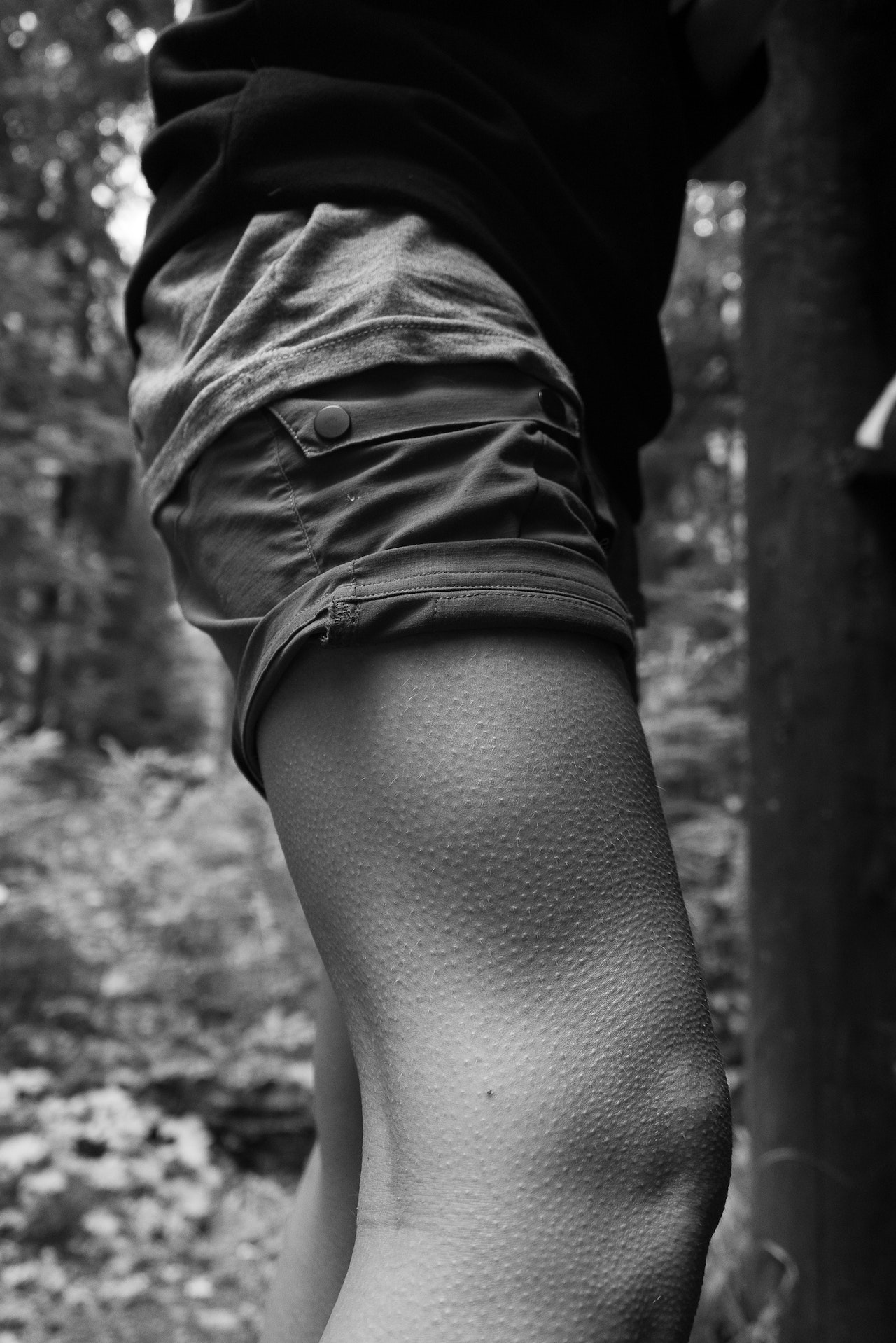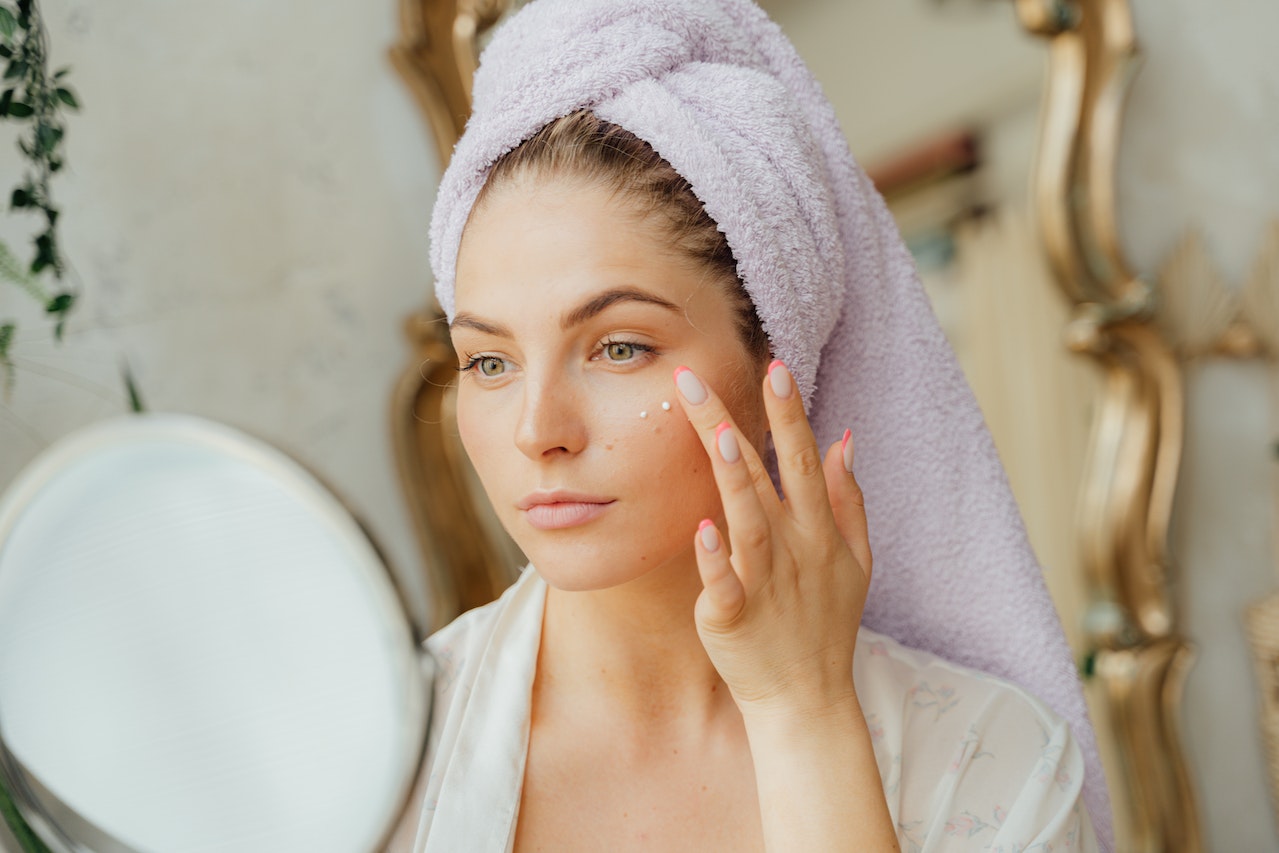Table of Contents
Many individuals experience the frustration of having rough, bumpy skin that resembles chicken skin. This common skin condition is known as keratosis pilaris (KP). Although harmless, KP can be a source of self-consciousness and discomfort. We will delve into the world of keratosis pilaris, exploring its causes, symptoms, and various treatment options. By gaining a deeper understanding of KP, you can take proactive steps to manage and improve the appearance of your skin.
✔️ What is Keratosis Pilaris?
Keratosis pilaris, commonly known as KP, presents as tiny, textured bumps on the skin’s surface, resembling the appearance of “chicken skin,” and while it is harmless, it can be a source of self-consciousness for many individuals. The bumps are caused by the buildup of keratin, a protein found in the outer layer of the skin, which clogs the hair follicles.
When keratin builds up, it forms a plug that blocks the opening of the hair follicles. This plug creates a bump on the skin, giving it a rough, sandpaper-like texture. The affected areas typically include the upper arms, thighs, buttocks, and cheeks, although KP can appear in other areas as well.
The exact cause of keratosis pilaris is not fully understood. Nevertheless, the development of keratosis pilaris can be influenced by various contributing factors. One of the main factors is genetics. KP tends to run in families, suggesting a hereditary component. If your parents or close relatives have KP, there is a higher likelihood that you may develop it as well.
Another contributing factor is dry skin. People with dry skin are more prone to developing KP because their skin lacks sufficient moisture. When the skin is dry, the keratinocytes (skin cells) can become sticky and accumulate around the hair follicles, leading to the formation of bumps.
Keratosis pilaris is also associated with other skin conditions like eczema. Individuals with eczema often have an impaired skin barrier, making their skin more susceptible to inflammation and irritation. This can contribute to the development of KP or worsen its symptoms.
Although keratosis pilaris is a benign condition, it can be bothersome and affect one’s self-confidence, especially when the bumps are noticeable or itchy. Understanding the causes and triggers of KP can help individuals manage and minimize its appearance through various treatment options and self-care practices, which will be discussed in more detail in the subsequent sections.
✔️ Causes of Keratosis Pilaris
Keratosis pilaris (KP) is a skin condition that can be influenced by several factors. While the exact cause of KP remains unclear, the following factors are known to contribute to its development:
Genetic Factors: One of the primary causes of KP is genetics. It tends to run in families, suggesting a hereditary component. If your parents or close relatives have KP, there is a higher likelihood that you may develop it as well. Certain genes may play a role in the abnormal production of keratin, leading to the buildup that clogs the hair follicles and manifests as KP.
Dry Skin: Individuals with dry skin are more prone to developing KP. When the skin lacks sufficient moisture, it becomes rough and prone to irritation. Dry skin can lead to the accumulation of keratin around the hair follicles, exacerbating the formation of KP bumps. It is important to keep the skin adequately moisturized to help prevent and manage KP symptoms.
Skin Conditions: KP is associated with other skin conditions like eczema (atopic dermatitis). Eczema is characterized by a compromised skin barrier, making the skin more susceptible to dryness, inflammation, and irritation. When individuals with eczema develop KP, the underlying skin condition may worsen the symptoms. Treating and managing eczema can help alleviate KP symptoms as well.
Hormonal Changes: Hormonal fluctuations can impact the severity of KP symptoms. Many individuals notice that their KP worsens during certain hormonal phases, such as puberty, pregnancy, or menstruation. Hormonal changes can affect the skin’s oil production, moisture balance, and keratinocyte activity, potentially contributing to KP flare-ups.
Environmental Factors: Certain environmental factors can aggravate KP symptoms. Cold, dry weather conditions tend to exacerbate dry skin, making KP more pronounced. Similarly, exposure to hot water or excessive heat can strip the skin of its natural oils and worsen KP. It is important to protect the skin from extreme temperatures and harsh environmental conditions.
Understanding the causes of KP can help individuals manage and minimize its impact on their skin. While it may not be possible to completely prevent KP, adopting a skincare routine that focuses on moisturization, gentle exfoliation, and protective measures can help reduce the appearance of KP bumps and promote smoother, healthier skin.
✔️ Symptoms of Keratosis Pilaris
Keratosis pilaris (KP) is characterized by specific symptoms that are typically observable on the skin’s surface. Understanding these symptoms can help individuals identify and differentiate KP from other skin conditions. The key symptoms of keratosis pilaris include:
Small Bumps: The primary characteristic of KP is the presence of small, raised bumps on the skin. These bumps are often described as rough, dry, and resembling sandpaper. They can vary in color, appearing flesh-colored, white, red, or slightly pink. The bumps are typically 1 to 2 millimeters in diameter and may be surrounded by a thin, dry layer of skin.
Rough Texture: Affected skin areas may feel rough to the touch due to the presence of the small bumps. This roughness is a result of keratin buildup within the hair follicles, which creates a plug and gives the skin its uneven texture. The roughness is often most noticeable when running a hand over the affected areas.
Common Locations: Keratosis pilaris typically occurs on areas of the body with a high concentration of hair follicles. The most commonly affected areas include the upper arms (especially the backs of the arms), thighs, buttocks, and cheeks. However, KP can also appear on the forearms, lower legs, and other parts of the body.
Itching or Discomfort: Some individuals with keratosis pilaris may experience mild itching or discomfort in the affected areas. The level of itchiness can vary from person to person and is often more pronounced when the skin becomes dry or irritated.
It is important to note that keratosis pilaris is a benign condition and does not typically cause pain or significant physical discomfort. The symptoms may be more bothersome from a cosmetic perspective or due to self-consciousness about the appearance of the skin.
While the symptoms of KP are generally distinctive, it is advisable to consult a dermatologist for an accurate diagnosis. They can assess the skin and rule out other potential skin conditions that may share similar symptoms. Once diagnosed with KP, individuals can explore treatment options and adopt appropriate skincare practices to manage the condition effectively.
✔️ Treatment Options for Keratosis Pilaris
Keratosis pilaris (KP) can be managed and its symptoms improved through various treatment options. The selection of treatment options varies based on the individual’s preferences and the extent of the condition’s severity. Here are some common treatment approaches for KP:
Topical Treatments:
Moisturizers: Regularly applying moisturizers can help improve the texture and appearance of the skin affected by KP. Look for moisturizers containing ingredients like urea, lactic acid, salicylic acid, or alpha-hydroxy acids (AHAs). These ingredients help exfoliate the skin, softening the bumps and reducing keratin buildup.
Exfoliating Creams or Lotions: Exfoliating products specifically formulated for KP can be beneficial. They often contain ingredients like urea, salicylic acid, or glycolic acid that help slough off dead skin cells and unclog hair follicles. Gently exfoliating the affected areas can promote smoother skin and reduce the appearance of bumps.
Retinoids: Topical retinoids, derived from vitamin A, can help in the treatment of KP. They work by promoting cell turnover and reducing the buildup of keratin in the hair follicles. Prescription-strength retinoids may be recommended by a dermatologist for more severe cases of KP.
Other Medical Treatments:
Laser Therapy: Laser treatment can be used to reduce the redness and bumpiness associated with KP. Laser therapy targets the blood vessels in the affected areas, helping to diminish redness and improve skin texture. For optimal outcomes, it may be necessary to undergo multiple sessions of the treatment.
Chemical Peels: Chemical peels utilize a solution containing specific chemicals that are applied to the skin, effectively exfoliating the outer layers and promoting skin renewal. This treatment can help remove dead skin cells, unclog pores, and improve the appearance of KP. Chemical peels should be performed by a trained professional.
Microdermabrasion: Microdermabrasion involves using a device to gently exfoliate the outermost layer of the skin, helping to remove dead skin cells and improve the texture of KP-affected areas. It is a non-invasive procedure and may require multiple sessions for noticeable results.
Natural Remedies and Home Care:
Gentle Exfoliation: Regularly exfoliating the affected areas with a gentle scrub or exfoliating cloth can help smooth the skin and reduce the appearance of bumps. However, avoid harsh scrubbing, as it can further irritate the skin.
Natural Oils: Moisturizing the skin with natural oils like coconut oil, jojoba oil, or almond oil can help improve hydration and soften the skin. Apply the oil to the affected areas after showering to lock in moisture.
Balanced Diet: Consuming a balanced diet rich in vitamins, minerals, and essential fatty acids can support overall skin health. Include foods like fruits, vegetables, whole grains, lean proteins, and healthy fats to promote healthier skin from within.
Self-Care Practices:
Avoiding Hot Water: To prevent exacerbation of dryness and KP symptoms, it is advisable to refrain from using hot water as it can strip the skin of its natural oils. Take lukewarm showers instead of hot baths, and avoid prolonged exposure to hot water.
Gentle Cleansing: Use gentle cleansers that do not contain harsh chemicals or fragrances. Harsh soaps or cleansers can further dry out the skin and worsen KP symptoms. Opt for mild, fragrance-free cleansers and avoid excessive scrubbing.
Protective Measures: Protect your skin from harsh weather conditions, especially cold and dry environments. Wear breathable clothing and use humidifiers in dry indoor spaces to maintain optimal moisture levels in the air.
It is important to note that while these treatments can help manage keratosis pilaris, they may not completely cure the condition. Consistency and patience are key, as improvements may take time. Consulting a dermatologist is recommended to determine the most suitable treatment approach based on individual circumstances and the severity of KP.
Conclusion
Understanding keratosis pilaris is the first step towards managing and improving the appearance of your skin. By familiarizing yourself with its causes, recognizing the symptoms, and exploring various treatment options, you can take proactive steps towards smoother, healthier skin. Remember that managing keratosis pilaris is a journey, and finding the right combination of treatments and self-care practices may require patience and experimentation. With knowledge, perseverance, and a positive mindset, you can regain confidence and embrace your skin with renewed self-assurance.




